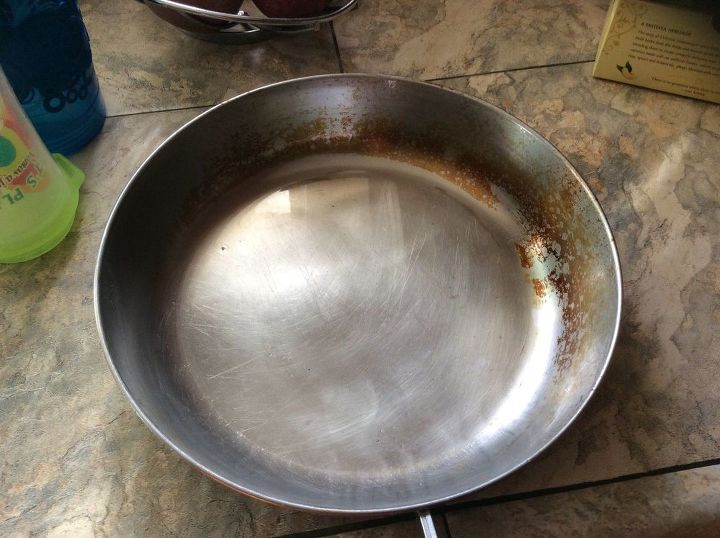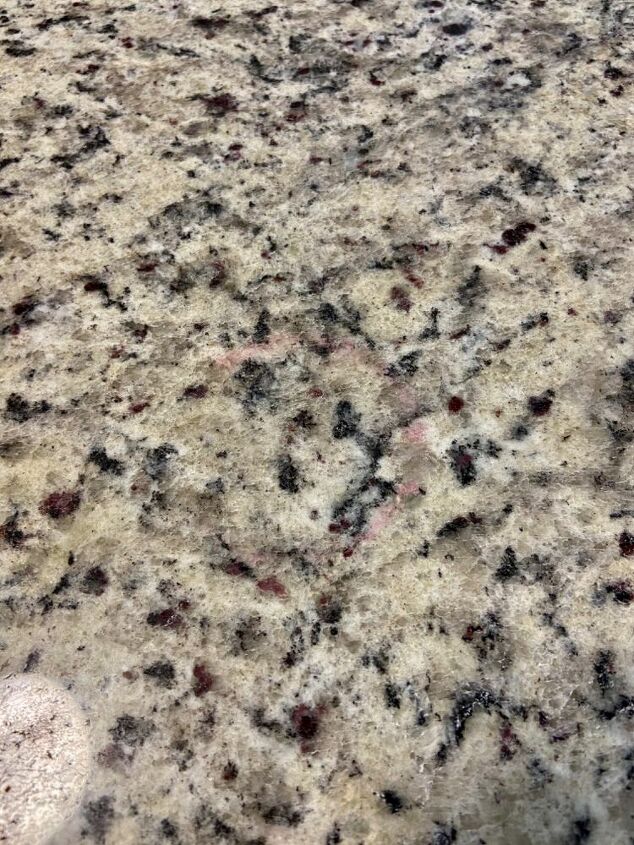What do I use to remove the “stickiness “ from my butcher block?
Related Discussions
How to clean a mirror without streaks?
Every time I clean my mirrors, they end up having tons of streaks and almost look worse than before I started. What could I use to clean them that won't leave streaks... See more
How to clean burns on stainless steel pans?
Help! I burned my pan. How do I clean stainless steel cookware that's been burned?
How to clean shower doors
How to clean glass shower doors
How to clean hardwood floors in the kitchen?
What is the best way to clean hardwood floors in the kitchen?
How to clean my kitchen cabinets from grease?
My kitchen cabinets are embarrassingly greasy. Please share your degreasing tips with me so I don't have to cringe every time I glance at my cabinets.
I spilled red wine on my countertop. What can I use to remove this?
Help me guys? What do you know about removing a stain like this
How do I remove a grease stain from my granite countertop?
My husband left a can of cooking spray on the counter and it left a grease ring on my new granite counter top that was recently installed.



https://www.ehow.com/how_5751677_restore-butcher-block-table.html
I've had good results with sticky kitchen surfaces using Krud Kutter Kitchen Degreaser All Purpose Cleaner. It's food safe and non-toxic. Amazon sells it: https://www.amazon.com/Krud-Kutter-305373-Degreaser-All-Purpose/dp/B01MRHQG7K/ref=sr_1_1_sspa?s=home-garden&ie=UTF8&qid=1530018745&sr=1-1-spons&keywords=krud+kutter&psc=1
Krud Kutter(on Prop 65 list) don't know how it's considered food safe??? They won't even provide a list of ingredients!? KK32Item Weight2.1 poundsProduct Dimensions5.1 x 3.2 x 11.5 inchesCalifornia residents Proposition 65 warningItem model numberKK32SizeSingle PackColor_MaterialLiquidItem Package Quantity1CertificationRemoves even the toughest stainsIncluded Componentsautomotive engine degreasers; Proposition 65, officially the Safe Drinking Water and Toxic Enforcement Act of 1986, is a law that requires warnings be provided to California consumers when they might be exposed to chemicals identified by California as causing cancer or reproductive toxicity. The warnings are intended to help california consumers make informed decisions about their exposures to these chemicals from the products they use. The California Office of Environmental Health Hazard Assessment (OEHHA) administers the Proposition 65 program and publishes the listed chemicals, which includes more that 850 chemicals. In August 2016, OEHHA adopted new regulations, effective on August 30, 2018, which change the information required in Proposition 65 warnings.
We are providing the following warning for products linked to this page:
WARNING: This product contains chemicals known to the State of California to cause cancer and birth defects or other reproductive harm.*EPA/Safer Choice recognition does not constitute endorsement of this product. The Safer Choice logo signifies that the product’s formula, as Krud Kutter Inc. has represented it to the EPA, contains ingredients with more positive human health and environmental characteristics than conventional products of the same type. EPA/Safer Choice relies solely on Krud Kutter Inc., its integrity and good faith, for information on the product’s composition, ingredients and attributes. EPA/Safer Choice has not independently identified, that is, via chemical analysis, the ingredients in the product formula, nor evaluated any of Krud Kutter Inc.’s non-ingredient claims. EPA/Safer Choice provides its evaluation only as to the product’s human health and environmental characteristics, as specified in the Standard and based on currently available information and scientific understanding.
Step 1: Clean Butcher BlockUsing hot, soapy water and a scrubby sponge or brush, thoroughly clean the surface of your butcher block. Make sure all stuck-on food particles are removed, and rinse well with hot water.Step 2: Sanitize with VinegarNext, rinse the butcher block with white vinegar. If you keep a vinegar-water solution in a spray bottle for general cleaning, just grab it and spritz the butcher block all over. Allow the vinegar to sit while you complete step three.Step 3: Make Lemon-Salt MixturePour about 1/4 cup salt into a bowl, and stir in enough lemon juice to make a paste. It’s not an exact science – adjust the consistency as you go, to make a workable paste.Step 4: Final Deodorizing and SanitizingUsing a scrub brush, thoroughly scrub your butcher block with the lemon-salt paste. This will remove odors and bleach out stains. If the paste gets too dry, sprinkle on a little more lemon juice. Rinse well, and squeegee off as much water as you can, and allow the butcher block to dry. I like to clean my butcher block right before bedtime, then let it dry overnight. The next morning, I make sure to seal it before I get it dirty again!Step 5: Seal with OilPour out a small amount of oil, and rub it into the wood using a cloth or paper towel. As the oil soaks in, add more and continue rubbing and polishing with the grain until the oil is absorbed. Don’t forget the edges! The first time you seal your butcher block, it may take several applications before it stops “drinking” oil, but in later cleanings you’ll just need to refresh it. Keep adding oil until no more soaks in, remove any excess with a cloth, and you’re done!There are several options for sealing butcher blocks, including:
Food Grade Mineral Oil: This is the top choice for butcher blocks, and it’s the primary ingredient in commercial sealing products. Look for food grade mineral oil in your local pharmacy – it’s also sold as a laxative – and it’ll be much cheaper in the pharmacy than in the hardware store. Mineral oil will give your butcher block a light honey color.Pure Tung Oil*: Made from the nut of the tung tree, pure tung oil can be expensive and hard to find, but it cures to a durable finish with a darker amber color. Because tung oil is made from natural ingredients, it’s a greener choice than mineral oil, which is petroleum based. Be sure to use only pure tung oil since chemicals may have been added to other tung oil products.Raw Linseed Oil: A form of flax oil. Use raw linseed oil, rather than boiled, since boiled oil can contain metallic dryers that aren’t considered food-safe.Walnut Oil* or Almond Oil*: These oils can be found at most gourmet grocery stores.Coconut Oil: While solid at room temperature (with the consistency of shortening), you can use a hair dryer to warm both the oil and wood as you rub it in. However, any leftover oil on the surface will cool into a waxy coating that shows markings and fingerprints.
*NOTE: Tung, walnut, and almond oil may pose a health risk if allergic to nuts.
Hometalk has a great step-by-step tutorial on how to clean a butcher's block: https://www.hometalk.com/diy/clean/kitchen/how-to-clean-butcher-block-44677174